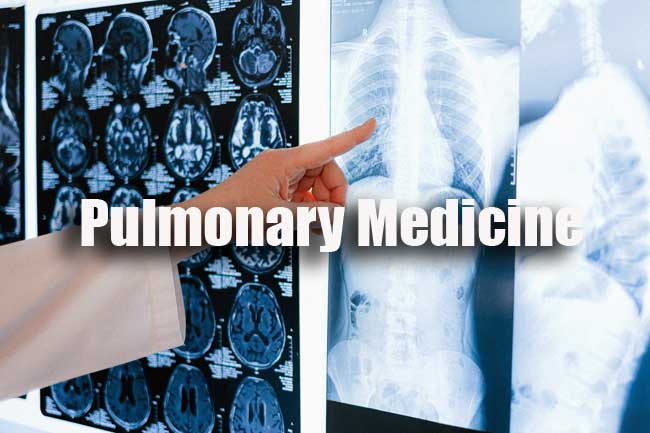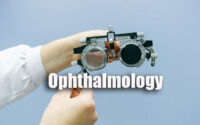Pulmonary Medicine MCQ
Pulmonary Medicine MCQ paper for the written examination is given below. Candidates who are looking for Pulmonary Medicine exam MCQ paper can find in this section. The applied candidates who are getting prepared for the Pulmonary Medicine can view this page for the Pulmonary Medicine Last Ten Years MCQ Papers.

Download the Pulmonary Medicine MCQ & Solutions & make it as a reference for your exam preparation. Take advantage of these Pulmonary Medicine MCQ Papers in a proper manner to get qualifying Marks. Last 5 years Pulmonary Medicine MCQ Papers provided here. Candidates who are applied for the above exam can check and download the Pulmonary Medicine MCQ Papers from here.
MCQ on Pulmonary Medicine
1. Right lung is seen to best advantage on the following views :
(1) Right posterior oblique
(2) Right anterior oblique
(3) Left anterior oblique
(4) Lateral
2. A chronic smoker presents with complaints of haemoptysis. Chest X-ray appears to be normal. What is the next best investigation ?
(1) Bronchoscopy
(2) High resolution CT
(3) Sputum Cytology
(4) Bronchoalveolar lavage
3. Multiple punched out lesions on X-ray is seen in:
(1) Paget’s disease
(2) Craniopharyngioma
(3) Multiple myeloma
(4) Eosinophilic granuloma
4. Which of the following statements regarding auscultation of the chest is TRUE ?
(1) Absence of breath sounds in the hemithorax is almost always associated with a pneumothorax.
(2) “Cardiac asthma” refers to wheezing associated with alveolar edema in congestive heart failure.
(3) Rhonchi are a manifestation of obstruction of medium-sized airways.
(4) The presence of egophony can be used to distinguish pulmonary fibrosis from alveolar filling.
5. A patient is evaluated in the emergency department for peripheral cyanosis. All of the following are potential etiologies EXCEPT :
(1) Cold exposure
(2) Deep venous thrombosis
(3) Methemoglobinemia
(4) Peripheral vascular disease
6. At what lung volume does the outward recoil of the chest wall equal the inward elastic recoil of the lung ?
(1) Expiration reserve volume
(2) Functional residual capacity
(3) Residual volume
(4) Tidal volume
7. Chronic silicosis is related to an increased risk of which of the following conditions ?
(1) Infection with Mycobacterium tuberculosis
(2) Lung cancer
(3) Rheumatoid arthritis
(4) All of the above
8. All of the following occupational lung disease are correctly matched with their exposure EXCEPT :
(1) Berylliosis-High-technology electronics
(2) Byssinosis-Cotton milling
(3) Farmer’s lung-Moldy hay
(4) Progressive massive fibrosis Shipyard workers
9. All of the following conditions are associated with an increased risk of methicillin-resistant Staphylococcus aureus as a cause of health care associated pneumonia EXCEPT :
(1) Antibiotic therapy in the preceding 3 months
(2) Chronic dialysis
(3) Hospitalization for more than 2 days in the preceding 3 months
(4) Nursing home residence
10. All of the following factors influence the likelihood of transmitting active tuberculosis EXCEPT :
(1) Environment in which contact occurs
(2) Presence of extra pulmonary tuberculosis
(3) Presence of laryngeal tuberculosis
(4) Probability of contact with an infectious person
11. All of the following statements regarding interferon-gamma release assays for the diagnosis of latent tuberculosis are true EXCEPT :
(1) There is no booster phenomenon.
(2) They are more specific than tuberculin skin testing.
(3) They have a higher sensitivity than tuberculin skin testing in high HIV-burden areas.
(4) They may be used to screen for latent tuberculosis in adults working in low prevalence U.S. settings.
12. All of the following statements regarding BCG vaccination are true EXCEPT :
(1) BCG dissemination may occur in severely immune suppressed patients.
(2) BCG vaccination is recommended at birth in countries with high TB prevalence.
(3) BCG vaccination may cause a false-positive tuberculin skin test result.
(4) BCG vaccine provides protection from TB in HIV infected patients.
13. All of the following respiratory viruses is a cause of the common cold syndrome in children or adults EXCEPT :
(1) Coronaviruses
(2) Enteroviruses
(3) Human respiratory syncytial viruses
(4) Rhinoviruses
14. Which of the following organisms is unlikely to be found in the sputum of a patient with cystic fibrosis ?
(1) Haemophilus influenza
(2) Acinetobacter baumannii
(3) Burkholderia cepacian
(4) Staphylococcus aureus
15. What would be the expected finding on bronchoalveolar lavage in a patient with diffuse alveolar haemorrhage ?
(1) Ferruginous bodies
(2) Hemosiderin laden macrophages
(3) Lymphocytosis with an elevated CD4:CD8 ratio
(4) Milky appearance with foamy macrophages
16. All the following are pulmonary manifestations of systemic lupus erythematosus EXCEPT :
(1) Cavitary lung nodules
(2) Diaphragmatic dysfunction with loss of lung volumes
(3) Pulmonary hemorrhage
(4) Pulmonary vascular disease
17. A 62 year old woman is hospitalized following an acute pulmonary embolism. All of the following would typically indicate a massive pulmonary embolism EXCEPT
(1) Initial presentation with hemoptysis.
(2) Initial presentation with syncope.
(3) Presence of right ventricular enlargement on CT scan of the chest.
(4) Presence of right ventricular hypokinesis on echocardiogram.
18. Patients with chronic hypoventilation disorders often complain of a headache upon wakening. What is the cause of this symptom ?
(1) Arousals from sleep
(2) Cerebral vasodilation
(3) Cerebral vasoconstriction
(4) Polycythemia
19. A 25 year old woman with cystic fibrosis is referred for lung transplantation. She is concerned about her long-term outcomes. Which of the following is the main impediment to long-term survival after lung transplantation ?
(1) Bronchiolitis obliterans syndrome
(2) Cytomegalovirus infection
(3) Primary graft dysfunction
(4) Post-transplant lymphoproliferative disorder
20. All of the following are relative contraindications for the use of succinylcholine as a paralytic for endotracheal intubation EXCEPT :
(1) Acetaminophen overdose
(2) Acute renal failure
(3) Crush injuries
(4) Muscular dystrophy
| Practice Set | MCQs |
| Quiz | Questions and Answers |
21. Which of the following statements regarding the distinction between acute lung injury (ALI) and acute respiratory distress syndrome (ARDS) is true ?
(1) ALI and ARDS can be distinguished by the magnitude of the PaO2/FiO2 ratio.
(2) ALI can be diagnosed in the presence of elevated left atrial pressure, but ARDS can not.
(3) ALI is caused by direct lung injury, but ARDS is the result of secondary lung injury.
(4) The risk of ALI but not ARDS increases with multiple predisposing conditions.
22. Which of the following has been demonstrated to reduce mortality in patients with ARDS ?
(1) High-dose glucocorticoids within 48 hours of presentation
(2) High-frequency mechanical ventilation
(3) Inhaled nitric oxide
(4) Low tidal volume mechanical ventilation
23. One of the following is an important key element in the past medical history of a patient in which ABPA is considered as a diagnostic possibility ?
(1) History of asthma
(2) History of cystic fibrosis
(3) Immunocompetent host
(4) All of the above
24. Which one of the following hypersensitivity reactions is not associated with the pathogenesis of ABPA ?
(1) Type I hypersensitivity
(2) Type II hypersensitivity
(3) Type III hypersensitivity
(4) None of the above
25. Which pulmonary function test finding is most likely to be found in a patient with a diagnosis of ABPA ?
(1) Broncho reversibility
(2) Obstructive pattern
(3) Restrictive pattern
(4) Decreased diffusion capacity
26. What percentage of patients with asthma that do not have ABPA have positive Aspergillus skin prick test ?
(1) 1-5%
(2) 10-20%
(3) 20-30%
(4) 40-50%
27. Which of the following tests is the most sensitive for monitoring treatment of ABPA ?
(1) Total IgE level
(2) Chest CT
(3) Pulmonary function testing
(4) Total peripheral blood eosinophil count
28. Which one of the following represents an advantage of treatment of ABPA with itraconazole ?
(1) Steroid sparing effect
(2) Decreased antigenic load
(3) Increased gastric absorption with a high pH
(4) All of the above
29. The predictors of the diagnosis of HP include the following EXCEPT :
(1) Exposure to a known offending allergen
(2) Weight loss
(3) Recurrent episodes of symptoms
(4) Wheezing
30. Acute HP is characterized by which of the following ?
(1) Flu like symptoms
(2) Exertional dyspnea
(3) Cyanosis
(4) Weight loss
31. Evaluation of suspected HP includes the following studies EXCEPT :
(1) Chest X-ray
(2) Complete blood count
(3) Serum specific IgE
(4) Serum antibody precipitants
32. In a classic presentation of acute HP pulmonary function tests demonstrate
(1) Restriction with low DLCO
(2) Restriction with high DLCO
(3) Obstruction with high DLCO
(4) Restriction and obstruction with normal DLCO
33. The most common cause of agricultural associated Hypersensitivity Pneumonitis (HP) is
(1) Acinetobacter
(2) Acinomycetes
(3) Penicillium
(4) Cephalosporium
34. Bronchoalveolar lavage from HP (Hypersensitivity Pneumonitis) patients is best characterized by an increase In
(1) Eosinophils
(2) Macrophages
(3) Neutrophils
(4) Lymphocytes
35. What are the lowest accepted cutoffs for alveolar eosinophilia (obtained on BAL) for Chronic Eosinophilic Pneumonia (CEP) ?
(1) > 10%
(2) >25%
(3) > 40%
(4) > 75%
36. Which form of eosinophilic pneumonia typically has radiographic evidence of infiltrates with peripheral predominance ?
(1) Acute Eosinophilic Pneumonia (AEP)
(2) ABPA
(3) Carcinoma Eosinophilic Pneumonia (CEP)
(4) Parasitic eosinophilic pneumonia
37. How does Acute Eosinophilic Pneumonia (AEP) differ from Chronic Eosinophilic Pneumonia (CEP) with regard to response to treatment and follow-up ?
(1) Unlike CEP, AEP has a slow response to treatment but rarely recurs
(2) Unlike CEP, AEP has a slow response to treatment and frequently recurs
(3) Unlike CEP, AEP has a rapid response to treatment and rarely recurs
(4) Unlike CP, AEP has a rapid response to treatment but frequently recurs
38. What role do transbronchial biopsies play in the diagnosis of eosinophilic pneumonias ?
(1) They are essential in the diagnosis of eosinophilic pneumonias
(2) They have replaced the need for a VATS-guided lung biopsy
(3) They can be used interchangeably with Bal fluid
(4) They are deemed necessary only in difficult to diagnose cases
39. What is the most common cause of eosinophilic pneumonias world wide ?
(1) Parasitic eosinophilic pneumonias
(2) ABPA
(3) Drug-induced eosinophilic pneumonias
(4) Asthma-associated eosinophilic pneumonias
40. Which of the following are possible causes of spontaneous pneumothorax ?
(1) Ruptured subpleural blebs
(2) Obstructive lung disease (asthma and COPD)
(3) Certain pulmonary infections (Pneumocystis pneumonia or Tuberculosis)
(4) All of the above
41. Which malignancies have been most frequently associated with refractory cases of spontaneous pneumothorax ?
(1) Lymphomas
(2) Sarcomas
(3) Bronchogenic carcinomas
(4) Mesotheliomas
42. Which of the following statements regarding the pathogenesis of mesothelioma is not correct ?
(1) All patients with Malignant Pleural Mesothelioma have a history of asbestos exposure.
(2) Malignant Pleural Mesothelioma typically develops 20-40 years after asbestos exposure.
(3) SV40 virus may be involved in the pathogenesis of some Malignant Pleural Mesothelioma cases.
(4) Familial cases of Malignant Pleural mesothelioma have been identified.
43. Which of the following is an indication to identify the causative organism for a pneumonia ?
(1) Fever greater than 102° F
(2) Failure of empiric antibiotic coverage
(3) Purulent sputum production
(4) Pulse oximetry of 88% on room air
44. Which test result is indicative of Legionella pneumonia ?
(1) Induced sputum showing marked eosinophilia
(2) Positive urinary antigen testing
(3) Bronchoalveolar lavage (BAL) fluid showing hemosiderin laden macrophages
(4) Thoracentesis with fluid analysis showing a cell count of 200 cell/HPF
45. Pneumocystis jiroveci pneumonia is an opportunistic organism that is associated with a defect in what part of the immune system ?
(1) B Cells
(2) Natural Killer Cells
(3) Macrophages
(4) T Cells



